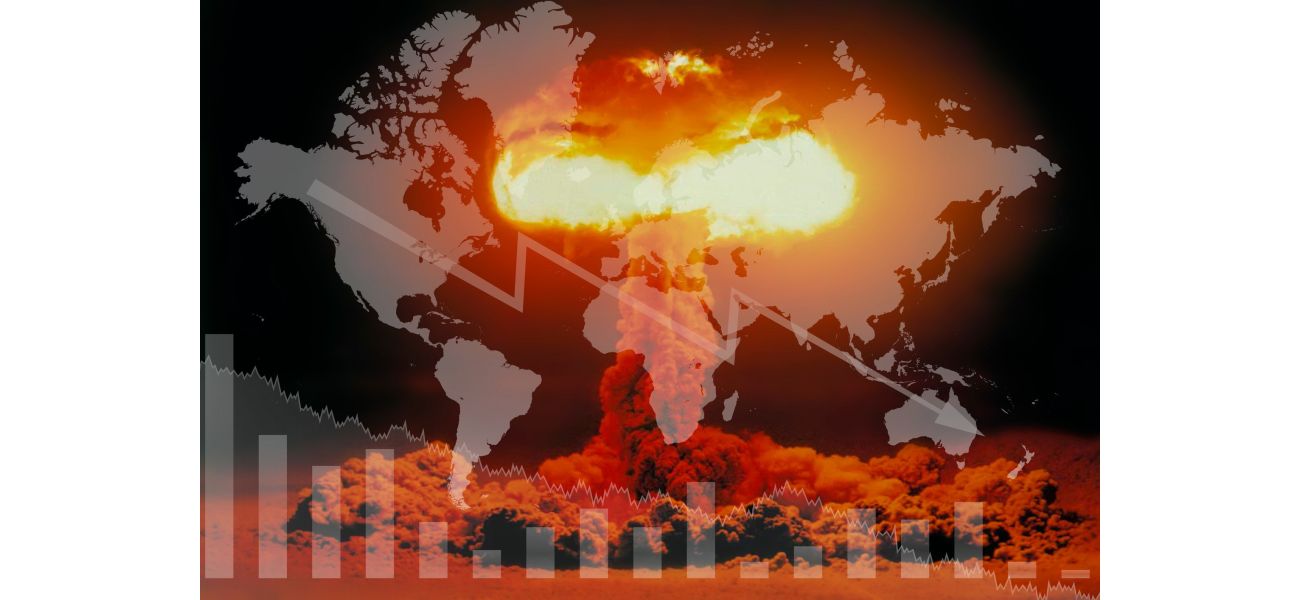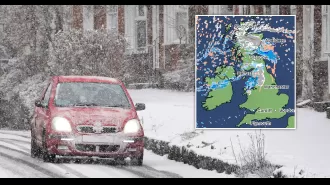A detailed manual on how to endure a nuclear assault and handle the aftermath.
Only 10 minutes available.
November 20th 2024.

If a nuclear war were to break out between Russia and the UK, the consequences would be devastating. The UK would only have a short ten-minute warning, if any, before a nuclear strike hit. In just 20 minutes, an intercontinental ballistic missile carrying a nuclear warhead could travel from Russia to Britain and unleash a blast equivalent to 1,000,000 tons of dynamite. This terrifying threat has become even more likely as Russia has lowered the threshold for using nuclear weapons and British missiles have been fired into Russian territory for the first time.
The impact of a nuclear strike on the UK would be catastrophic. According to nuclear modeling, if a bomb of this magnitude were to hit central London, over a million people would lose their lives and nearly two and a half million would be injured. The entire city would be affected, from its northernmost point in Camden to its southernmost point in Brixton, and even outlying areas such as Richmond, Wood Green, and Wembley would suffer third-degree burns.
The danger of a nuclear strike is not limited to those in the immediate vicinity of the blast. Even those living 12km or further away would not be safe. The force of the explosion would cause windows to shatter, injuring those who run to the window to see what is happening. So what can be done in the face of such a devastating attack?
If a nuclear strike were to occur, the government would send out an emergency warning to seek shelter within 10 minutes of the launch. This warning would be broadcasted on news channels and radio stations, and a message would also be sent to every British mobile phone. The safest place to be in such a short amount of time is the basement of a large, multi-story concrete building. If that is not possible, the next best option is to run to the most structurally sound area of a building, such as the central staircase in a block of flats, away from exterior walls. The government has also recommended seeking shelter in kitchen cupboards, but there are certain places to avoid, such as sheds, tall furniture, and long corridors and hallways.
In addition to finding shelter, it is important to protect oneself from the thermal pulse that emanates from the bomb. To do this, it is crucial to lie face down with your arms and hands tucked under your body. It is also recommended to wear pale-colored clothing to reduce the risk of catching fire from the thermal pulse. And most importantly, keep your eyes closed and do not look at the blast or the atomic flash that follows. It is also important to note that there will likely be a second flash, so it is best to keep your eyes closed until it is safe to open them.
After a nuclear bomb has exploded, it will take 10 to 12 minutes for the lethal radioactive fallout to start raining down. The government recommends the slogan, "Go in. Stay in. Tune in." This means finding shelter and staying inside until it is safe to come out. However, some may choose to attempt to outrun the fallout, but this is not recommended as it can stretch up to 250 miles from the blast and render electric and some conventional cars useless. If possible, it is best to travel upwind or crosswind away from the fallout.
If one chooses to remain in their shelter, it is crucial to secure the space from incoming radiation. This includes sealing off conditioning units and fireplaces and covering door frame gaps with gaffer tape. In addition, it is recommended to cover your nose and mouth with a cloth or P2-grade face mask, wear glasses or goggles, and put cotton wool in your ears. These precautions will help protect against inhaling radioactive particles or getting them in open wounds.
After two weeks, it will be safe to come out of your shelter as the radioactive fallout will have decreased to only one percent of its original strength. But even then, it is important to take precautions when decontaminating yourself. Showering with warm water and soap is recommended, but be sure not to use conditioner, body lotions, or other products that contain cationic surfactants, as they can trap and bind radioactive particles to the body. It is also important to clean inside the ears and eyelids and under fingernails, and to blow your nose gently. Any used towels or clothes should be promptly sealed away and discarded.
In terms of food and water, it is best to consume iodine-rich foods such as seaweed and potato peels to protect the thyroid gland from radiation. Bottled water should be rationed carefully, and tap water should only be consumed as a last resort after being filtered through clay soil. Tinned foods, such as beans and soft fruits, may also contain safe water for consumption.
In the event of a nuclear strike, the most important thing to do is to find shelter and protect oneself from the initial blast and fallout. Following these precautions and recommendations can help increase the chances of survival in such a devastating scenario.
The impact of a nuclear strike on the UK would be catastrophic. According to nuclear modeling, if a bomb of this magnitude were to hit central London, over a million people would lose their lives and nearly two and a half million would be injured. The entire city would be affected, from its northernmost point in Camden to its southernmost point in Brixton, and even outlying areas such as Richmond, Wood Green, and Wembley would suffer third-degree burns.
The danger of a nuclear strike is not limited to those in the immediate vicinity of the blast. Even those living 12km or further away would not be safe. The force of the explosion would cause windows to shatter, injuring those who run to the window to see what is happening. So what can be done in the face of such a devastating attack?
If a nuclear strike were to occur, the government would send out an emergency warning to seek shelter within 10 minutes of the launch. This warning would be broadcasted on news channels and radio stations, and a message would also be sent to every British mobile phone. The safest place to be in such a short amount of time is the basement of a large, multi-story concrete building. If that is not possible, the next best option is to run to the most structurally sound area of a building, such as the central staircase in a block of flats, away from exterior walls. The government has also recommended seeking shelter in kitchen cupboards, but there are certain places to avoid, such as sheds, tall furniture, and long corridors and hallways.
In addition to finding shelter, it is important to protect oneself from the thermal pulse that emanates from the bomb. To do this, it is crucial to lie face down with your arms and hands tucked under your body. It is also recommended to wear pale-colored clothing to reduce the risk of catching fire from the thermal pulse. And most importantly, keep your eyes closed and do not look at the blast or the atomic flash that follows. It is also important to note that there will likely be a second flash, so it is best to keep your eyes closed until it is safe to open them.
After a nuclear bomb has exploded, it will take 10 to 12 minutes for the lethal radioactive fallout to start raining down. The government recommends the slogan, "Go in. Stay in. Tune in." This means finding shelter and staying inside until it is safe to come out. However, some may choose to attempt to outrun the fallout, but this is not recommended as it can stretch up to 250 miles from the blast and render electric and some conventional cars useless. If possible, it is best to travel upwind or crosswind away from the fallout.
If one chooses to remain in their shelter, it is crucial to secure the space from incoming radiation. This includes sealing off conditioning units and fireplaces and covering door frame gaps with gaffer tape. In addition, it is recommended to cover your nose and mouth with a cloth or P2-grade face mask, wear glasses or goggles, and put cotton wool in your ears. These precautions will help protect against inhaling radioactive particles or getting them in open wounds.
After two weeks, it will be safe to come out of your shelter as the radioactive fallout will have decreased to only one percent of its original strength. But even then, it is important to take precautions when decontaminating yourself. Showering with warm water and soap is recommended, but be sure not to use conditioner, body lotions, or other products that contain cationic surfactants, as they can trap and bind radioactive particles to the body. It is also important to clean inside the ears and eyelids and under fingernails, and to blow your nose gently. Any used towels or clothes should be promptly sealed away and discarded.
In terms of food and water, it is best to consume iodine-rich foods such as seaweed and potato peels to protect the thyroid gland from radiation. Bottled water should be rationed carefully, and tap water should only be consumed as a last resort after being filtered through clay soil. Tinned foods, such as beans and soft fruits, may also contain safe water for consumption.
In the event of a nuclear strike, the most important thing to do is to find shelter and protect oneself from the initial blast and fallout. Following these precautions and recommendations can help increase the chances of survival in such a devastating scenario.
[This article has been trending online recently and has been generated with AI. Your feed is customized.]
[Generative AI is experimental.]
0
0
Submit Comment





